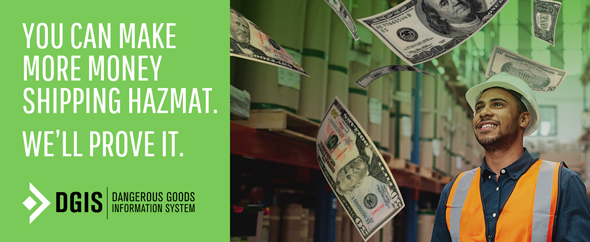

Week of March 21, 2022
Linking supply chain news with dangerous goods compliance
In recent years, many conversations and headlines around the supply chain have also included the term “shortage.” From drivers to shipping containers and truck drivers to cardboard boxes and labels, supply chain-related shortages continue to impact businesses across a wide range of industries.
Let’s examine some recent industry news.
SUPPLY CHAIN NEWS
- Can a Label Shortage Bring Global Supply Chains to a Halt?: If retailers, manufacturers and transportation providers can’t get paper labels, the entire supply chain could quickly reach a crisis and even grind to a halt.
- Chip Shortage? Now it’s a Ship(ping Container) Shortage: Shortages of chips and other parts have significantly impacted automakers, now they must deal with a shortage of shipping containers and cargo vessels.
- Supply Chain Shortages Affect America’s Girl Scout Cookies: National Girl Scout Cookie season has officially commenced but getting ahold of your favorite cookies may be easier said than done.
- Trucking Industry Faces Record Driver Shortage: The national truck driver shortage hit a historic high in 2021, but hiring, training, and developing young drivers is essential to keep the future of U.S. freight deliveries running smoothly and on schedule.
- Processors Under Pressure When it Comes to Packaging: More expensive materials, labor and transport add up to a challenge for users of all kinds of packaging.
OUR PERSPECTIVE
- Shortages create a ripple effect throughout the supply chain. Supply chain issues and the increased demand for goods have put pressure on businesses to expedite the shipment process or find an alternative way to get goods to customers. Since today’s supply chains are connected, disruptions and shortages in one area can cause problems downstream. This is especially true when it comes to DG compliance.
- Compliance makes adapting to shortages more difficult. What it takes to prepare a DG shipment for transport is different than other goods, making navigating supply chain shortages more challenging. For example, air transport is far more restrictive than truck or ocean in terms of volumes and quantities allowed, and packaging, documentation and labels required, making shifting transportation modes not a simple task. Additionally, DG packaging must be UN-specified, so when faced with a shortage of their usually packaging, businesses cannot simply find the next best thing on-hand and throw DG in it.
- Compliance cannot be overlooked (or ignored). Compliance requirements don’t go away just because you’re out of UN-specified packaging or have to ship via air because there aren’t any shipping containers available. Businesses adjusting operations due to shortages must make compliance a key part of the decision-making. Businesses that fail to adjust their shipping approach in a safe and compliant way could face an array of repercussions – from the relatively minor inconvenience of a shipment delay to the more major consequences of losing shipments to damage or shutting down operations entirely.
To learn more about Dangerous Goods software or how to establish a safer, more compliant supply chain, visit https://www.labelmaster.com.
Have questions about Dangerous Goods transport? Call the Labelmaster Regulatory Hotline at 1.800.621.5808.

As the industry’s most robust, flexible, and advanced hazmat shipping software, Labelmaster’s DGIS can actually help your operation make more money. DGIS validates shipments and prepares DG declarations so quickly, you can handle more shipments every hour. And more shipments mean more revenue.
Try your own numbers in our calculator to see the added revenue DGIS can generate for you.



